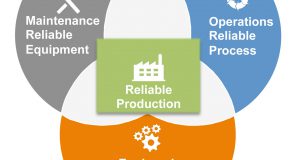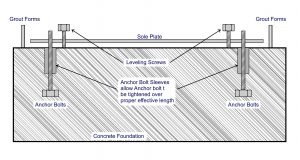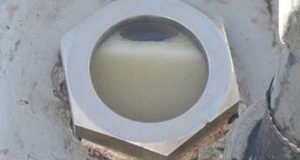How to Build a Maintenance 4.0 Roadmap for the Pulp and Paper Industry
PATRICK KUSTER AND EITAN VESELY
If we are to believe industry analysts, the pulp and paper industry has been at a point of inflection for the last few years. We have come to believe that significant performance results from digital transformation are within reach. An alternative viewpoint is that digitalization has been hyped, it is a top-down strategy, and its implementation is constrained by plant-floor operational factors.
These conflicting messages highlight the risk of digitalization: overinvestment in overhyped solutions versus underinvesting and falling behind in the digitalization journey. With this context and with the experience of advising thousands of businesses who seek our support in this area, SKF has outlined practical guidance for how to build the roadmap for Maintenance 4.0 and the future plant, all while minimizing investment and operational risks.
A DISCONNECT BETWEEN C-SUITE AND MILL FLOOR
Let’s start with a brief history. Five years ago, PwC, a UK-based firm offering assurance, tax, and advisory services, conducted a global research project to assess plans for Industry 4.0 within the sector. The overwhelming majority of forest, paper, and packaging executives (72 percent) expected to reach advanced levels of digitalization by 2021. Furthermore, the forecast was 3.1 percent per annum in additional revenue and 4.2 percent in cost reductions per annum over the five-year period. In hindsight, these projections were not reached.

The data could reflect an underlying disconnect between corporate vision and plant floor reality. At SKF, we provide a thorough audit of a plant’s reliability and maintenance practices as the first step in “Rotation as a Service” agreements. The data we have compiled from a Client Needs Analysis of 419 pulp and paper clients is that only 35 percent of plants have reached best practice levels for availability and that 18 percent have annual maintenance cost as a percentage of facility replacement costs above 9 percent (Fig. 1). In summary, plant shareholders are still waiting to see the significant returns from their investments in Industry 4.0.
OPERATIONAL RISK IN THE POST-PANDEMIC ERA
COVID-19 was a stress-test for the pulp and paper sector, which was forced to adjust product line and output levels in response to pandemic-related gyrations in consumer behavior. At the same time, there were supply chain disruptions due to the global nature of the pandemic.
Remote maintenance practices were needed to enable social distancing for employee health, along with protecting supply chain from disruption caused by a once in a lifetime pandemic. Post coronavirus, risk mitigation is critical, and it requires us to rethink planning and investment. Our recommendations for Maintenance 4.0 roadmap planning are based on an incremental approach designed to minimize disruption and spend carefully.

Roadmapping is the process of defining the business future state, and then identifying the building blocks required for implementation. In the example of a roadmapping exercise shown in Figure 2, we divide the roadmap into short-, medium-, and long-term. The challenge for building the Maintenance 4.0 roadmap is that there is much conflicting information in the market, and no clear direction as to how to achieve the elusive “digital transformation.”
From our experience at SKF, both as a world-class manufacturer and leading bearing supplier, we recognize the temptation to rely on vendors’ knowledge and expertise. With rapid innovation in relatively new areas such as Machine Learning and Artificial Intelligence (AI), aligning plans with vendors’ solution roadmaps may be considered a shortcut, especially in those areas where plants lack deep domain expertise.
We should tune out the noise from external sources and understand what is realistically achievable. Before prioritizing roadmap elements, we suggest an inside-out view based on an internal assessments of organization strengths, maintenance practices and technology maturity.
To what extent can current employees support the deployment of new tools and technologies? A major challenge across the industry is how to build a Maintenance 4.0 roadmap for the future factory when there are not enough skilled workers to replace those who are retiring. Planners need to be disciplined in this area because the alternative is to over-invest in infrastructure or solutions that cannot be fully utilized.
Based on this internal assessment, the external organizational support required to scale Maintenance 4.0 can be identified. In the case of the AI solutions referenced here, if the organization lacks technicians to interpret the results from advanced analytics programs, can the vendor itself provide analytics support via professional services? An alternative idea that has gained popularity is to train current employees to become so-called “Citizen Data Scientists.”
RIP AND REPLACE VS. CONTINUOUS IMPROVEMENT
The “rip and replace” concept comes from the IT domain. According to CIO.com, it refers to replacing an “old, complex, unreliable system with one that is modern, fully functional, flexible, and responsive to changing business needs.”
When planning for specific elements of the roadmap, we recommend incorporating the concept of continuous improvement. When businesses today acquire software for information workers, the preferred model is “Software as a Service,” such as Microsoft’s Office 365. In this way, the software vendor commits to significant investments in feature enhancements without disrupting the end-user or forcing time-consuming upgrades. This same principle can be applied to Maintenance 4.0, where suppliers deliver via an as-a-service model and commit to continuous improvement of their offering and the ability to adapt and scale based on the requirements of the plants.
WHERE TO START? PERFORMANCE OF CRITICAL ASSETS
If the end point for roadmapping is considered the nirvana future state, we could overlook opportunities today that can improve the bottom line.
Asset criticality is the starting point for prioritizing areas of Maintenance 4.0 investment. Asset criticality is defined as the ranking of an asset in order of its importance to the business. It is often calculated in terms of the consequence of an asset failing to perform its intended function and the likelihood of the failure occurring.
Initial plans should address improvements in performance levels of assets with the highest level of criticality. In this way, there is an opportunity to demonstrate tangible results, which in turn will generate positive momentum.
As we plan for 2022 and beyond, it will not be possible to revert to old paradigms in a post-pandemic era. Whereas in the past, minimizing spare part inventory may have been considered integral to operational efficiency, mills today are more concerned about avoiding production downtime due to shortages. Similarly, the shift to offsite analytics and monitoring is likely to accelerate, especially since centralizing these activities has the added benefit of scale and plants are facing a retiring workforce and shortage of technicians at the plant level.
The pulp and paper industry’s performance during the pandemic demonstrates its resilience. As planning for digital transformation and Maintenance 4.0 resumes, a move to an incremental and performance-orientated approach can bridge the gap between corporate strategy and plant level reality.
Patrick Kuster is responsible for business development for SKF’s predictive maintenance offering in the Nordic countries and Central Europe. He has more than 20 years of experience in data, analytics and digital twin technology. Eitan Vesely is responsible for market strategy and strategic partnerships within SKF Technology. He was previously the CEO of Presenso, an AI-based Predictive Maintenance startup acquired by SKF in 2019.




